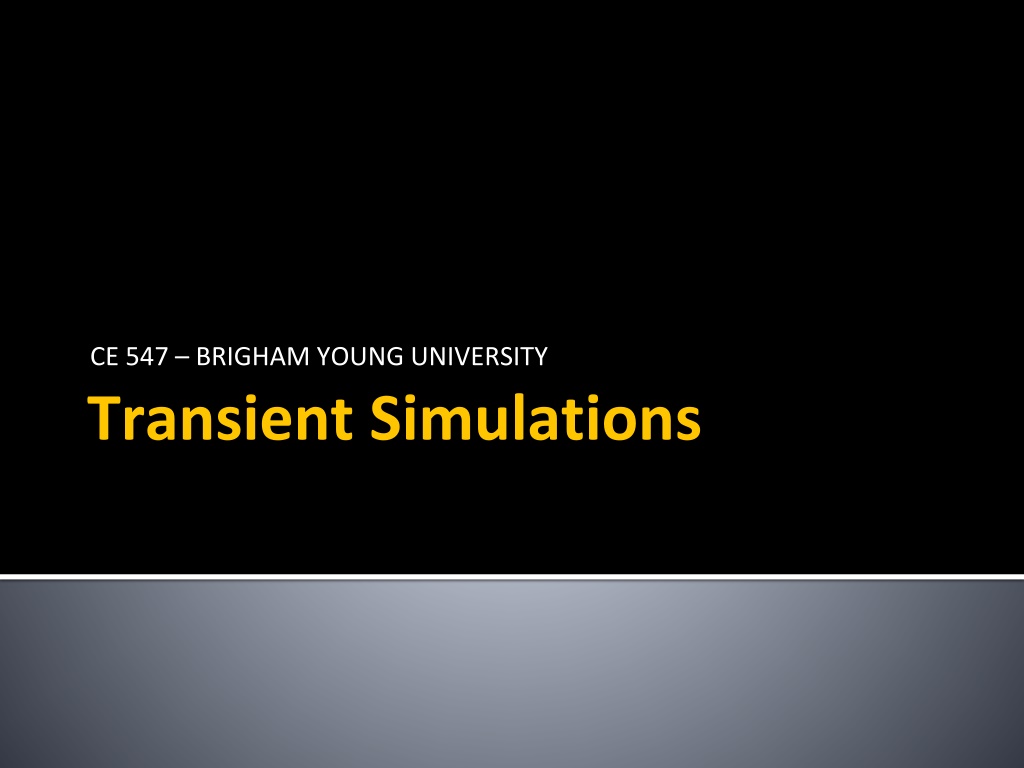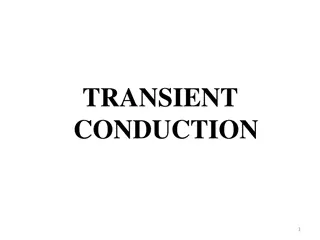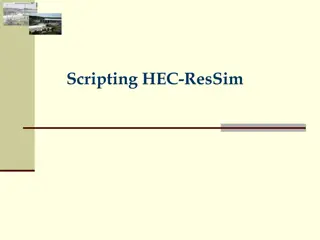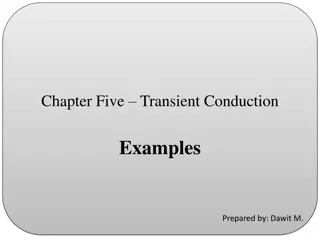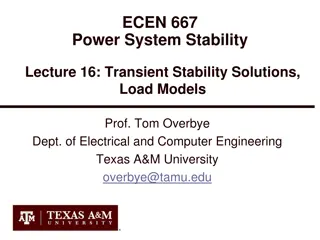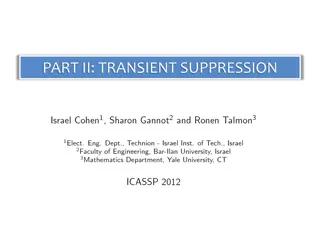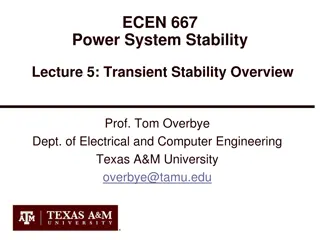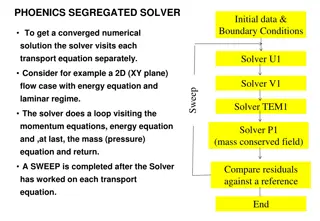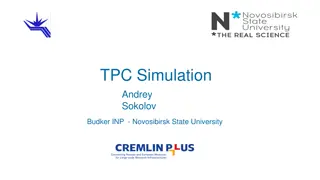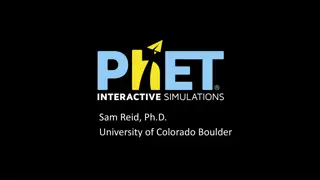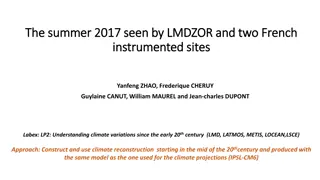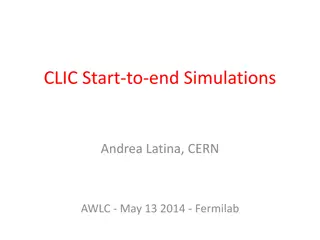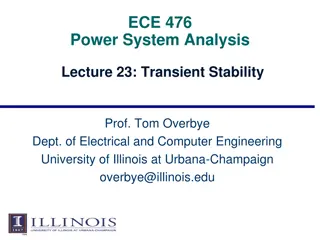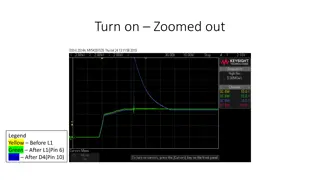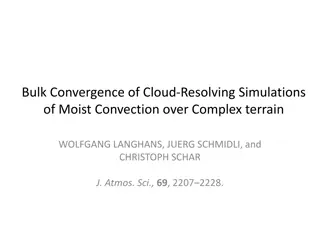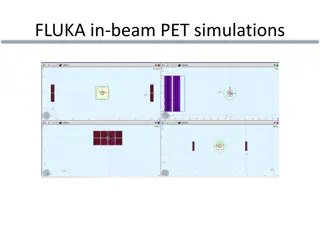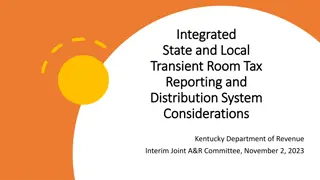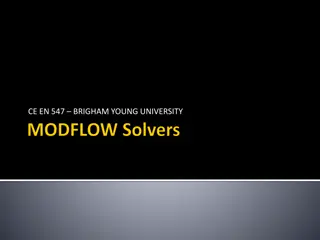Understanding Transient Simulations in MODFLOW
Explore the key aspects of transient simulations in MODFLOW such as storage coefficients, initial conditions, stress periods, and the Changing Head Boundary package. Learn about the importance of storage parameters, LPF package options, defining initial conditions, and utilizing model-generated heads for consistent results. Gain insights into steady-state and transient model conditions, along with practical examples illustrating water table changes over time.
Download Presentation

Please find below an Image/Link to download the presentation.
The content on the website is provided AS IS for your information and personal use only. It may not be sold, licensed, or shared on other websites without obtaining consent from the author. Download presentation by click this link. If you encounter any issues during the download, it is possible that the publisher has removed the file from their server.
E N D
Presentation Transcript
CE 547 BRIGHAM YOUNG UNIVERSITY Transient Simulations
Lecture Objectives Know what storage coefficients are required by MODFLOW Understand the importance of proper initial conditions for transient simulations Understand stress periods and time steps in MODFLOW Learn about the Changing Head Boundary (CHD) package
Storage Parameters MODFLOW requires either a primary storage coefficient or both a primary and secondary storage coefficient Depends on: Layer type Flow package used
LPF Package Confined Specific Storage Convertible Specific Storage Specific Yield Note: Similar set of options for BCF and HUF packages
Defining Initial Conditions For steady state models: The initial conditions represent a guess at the starting heads and don t generally have a big impact on the solution. For transient model: The initial conditions represent the state of the aquifer at the beginning of the simulation Starting head values should be carefully selected Arbitrary head values or heads interpolated from observation wells should NOT be used
Model-Generated Heads "Use of model-generated head values ensures that the initial head data and the model hydrologic inputs and parameters are consistent. If the field-measured head values were used as initial conditions, the model response in the early time steps would reflect not only the model stresses under study but also the adjustment of model head values to offset the lack of correspondence between model hydrologic inputs and parameters and the initial head values." Anderson & Woessner, Applied Ground Water Modeling
Steady State Initial Condition Head at a point in the model domain Arbitrary starting head Steady-state solution compatible with BC for transient simulation Time
Example Water table lowers with time
Initial Conditions Recent versions of MODFLOW include an option to automatically run first time step as a steady state solution. This takes care of the problem automatically.
Stress Periods & Time Steps Few stress periods, many time steps Few time steps, many stress periods
Time Steps Must choose appropriate distribution of time step sizes: Too short -> long simulation times, large solutions Too long -> model error
Time Step Rule of Thumb Where: t = the time step increment S = storage coefficient a = representative cell dimension in x and y. T = transmissivity
Changing Head (CHD) Package Original method for defining specified heads works for static (steady state) heads only - IBOUND Array - Starting Heads Array CHD later added to allow for transient specified head boundary conditions
CHD Package For each stress period, beginning and ending head is assigned
